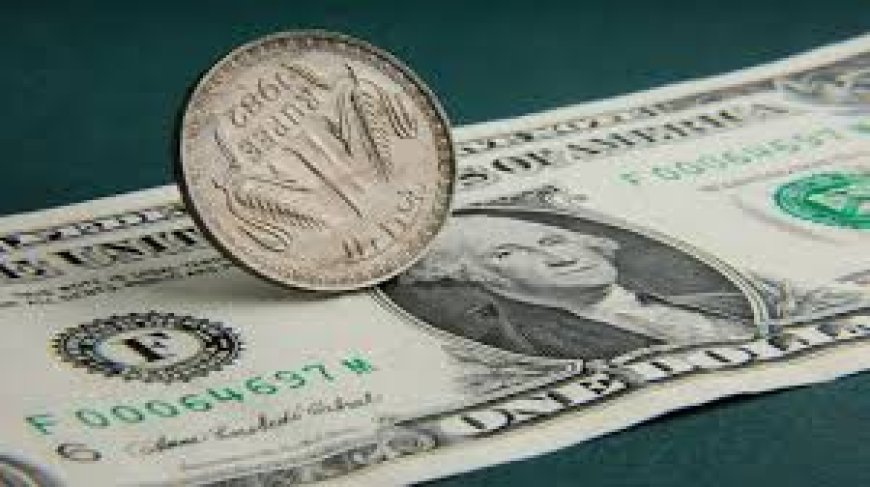Rupee at over at four-month low at 87.43 against dollar on Trump’s tariff threat
The Indian rupee hits a four-month low of 87.43 against the dollar following Donald Trump’s tariff warning. Read on for expert analysis, RBI moves, and investor outlook.

Rupee Hits 87.43 Per Dollar: Trump’s Tariff Threat Rattles Emerging Markets
The Indian rupee fell sharply on Tuesday, settling at 87.43 per US dollar, marking its lowest level in over four months, after former US President Donald Trump reignited global trade tensions with a threat to reimpose tariffs on Chinese goods if re-elected. The currency weakened by 32 paise intraday as risk-averse investors fled to the relative safety of the dollar amid fears of a renewed trade war that could disrupt global supply chains.
Market participants were spooked after Trump, in a high-profile speech at a campaign rally in Michigan, vowed to impose "universal baseline tariffs on all imports", reviving memories of the 2018-2019 trade war. This sent ripples across emerging market currencies, including the Indian rupee, which was already under pressure due to elevated crude prices, persistent foreign fund outflows, and global dollar strength.
Dollar Demand Rises; Importers Hedge Aggressively
Forex traders reported aggressive dollar buying by importers, especially oil companies, to hedge against further rupee depreciation. The US dollar index, which measures the greenback’s strength against a basket of major currencies, climbed to 106.21, its highest level since March.
“The rupee’s slide is primarily driven by the renewed tariff threats and global risk-off sentiment. With the dollar gaining sharply, the RBI might intervene intermittently, but the broader trend remains bearish for the rupee,” said Anindya Banerjee, VP - Currency Derivatives & Interest Rate Derivatives at Kotak Securities.
Geopolitical Concerns and Oil Prices Add to Pressure
Adding to the rupee’s woes are rising geopolitical tensions in the South China Sea and escalating crude oil prices, with Brent crude futures trading at $88.50 per barrel, up nearly 10% month-to-date. India, being a major oil importer, faces a twin risk of widening current account deficit and rising inflation as global commodity prices remain firm.
“High oil prices directly impact the rupee due to India’s import dependency. Any additional uncertainty from the US-China front just compounds the challenges,” noted Radhika Rao, Senior Economist at DBS Bank.
FPIs Turn Net Sellers as Risk Sentiment Weakens
Foreign portfolio investors (FPIs) have turned cautious amid global volatility. According to data from the National Securities Depository Ltd (NSDL), FPIs have withdrawn nearly ₹4,300 crore ($515 million) from Indian equities in the last five trading sessions alone.
“We’re seeing a flight to safety across emerging markets. Investors are increasingly parking money in US Treasuries and dollar-denominated assets, weakening EM currencies like the rupee,” said Rahul Gupta, Head of Research - Currency at Emkay Global.
RBI Intervention Likely But Headroom Limited
The Reserve Bank of India (RBI) was spotted selling dollars in spot and forward markets during the session to curb excessive volatility. However, traders believe the central bank may allow a gradual depreciation of the rupee to avoid draining forex reserves, which stood at $644.2 billion as of July 19.
“The RBI has been managing the rupee in a non-disruptive manner. Intervention is more aimed at slowing the pace of depreciation rather than defending a specific level,” explained Madhavi Arora, Lead Economist at Emkay Global Financial Services.
Market Context: Broader Risk-Off Sentiment Prevails
Global equity markets remained jittery, with the Nifty 50 falling 0.9% and Sensex shedding over 600 points as investors reassessed their risk appetite. The volatility index (India VIX) spiked 11% intraday, reflecting heightened uncertainty.
The US 10-year Treasury yield also rose to 4.32%, signaling stronger capital flows into US bonds. Meanwhile, gold prices climbed as investors sought safe-haven assets, with spot gold trading at $2,047 an ounce.
Investor Outlook: Caution Prevails Amid Global Uncertainty
Analysts expect the rupee to remain under pressure in the near term, with possible testing of 88 levels, especially if global risk sentiment deteriorates further.
“From an investment standpoint, we advise exporters to hedge selectively and importers to hedge more aggressively. Equity investors should watch for global cues, especially US election rhetoric and China’s policy response,” said Kunal Sodhani, Vice President, Shinhan Bank India.
On the brighter side, some exporters stand to benefit from the weaker rupee, particularly in IT services, pharmaceuticals, and textiles, where billing is largely dollar-denominated.
The rupee's descent to a four-month low is a reflection of the fragile equilibrium in global financial markets. With US election rhetoric heating up and trade war fears re-emerging, currency markets are likely to remain volatile. The RBI’s calibrated interventions and global macro trends will be key in determining the rupee’s trajectory in the coming weeks.
What's Your Reaction?
 Like
0
Like
0
 Dislike
0
Dislike
0
 Love
0
Love
0
 Funny
0
Funny
0
 Angry
0
Angry
0
 Sad
0
Sad
0
 Wow
0
Wow
0












































































